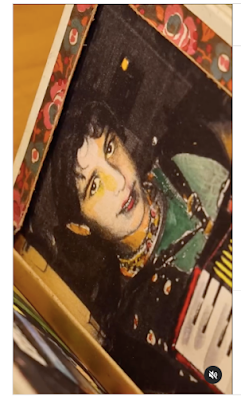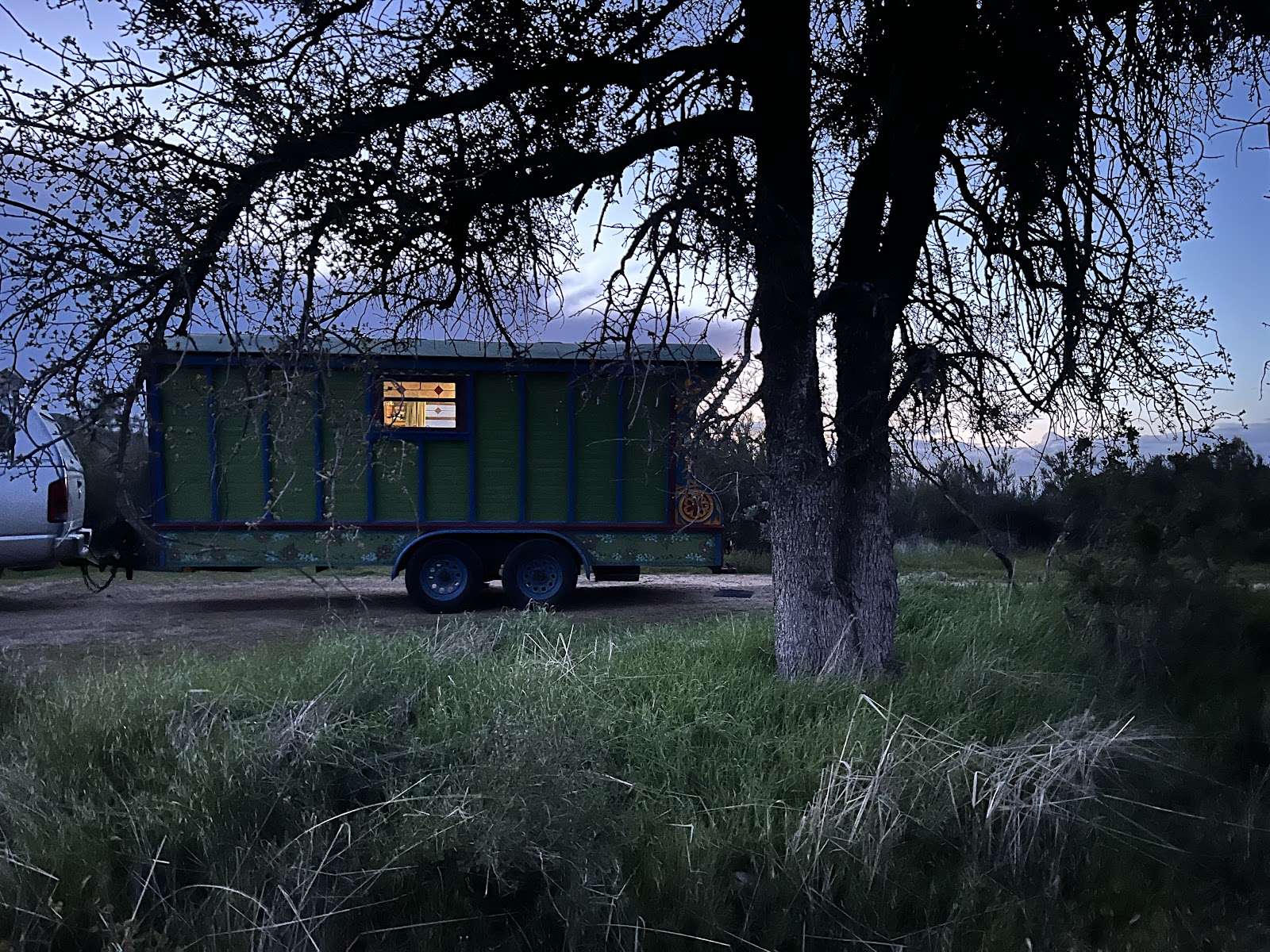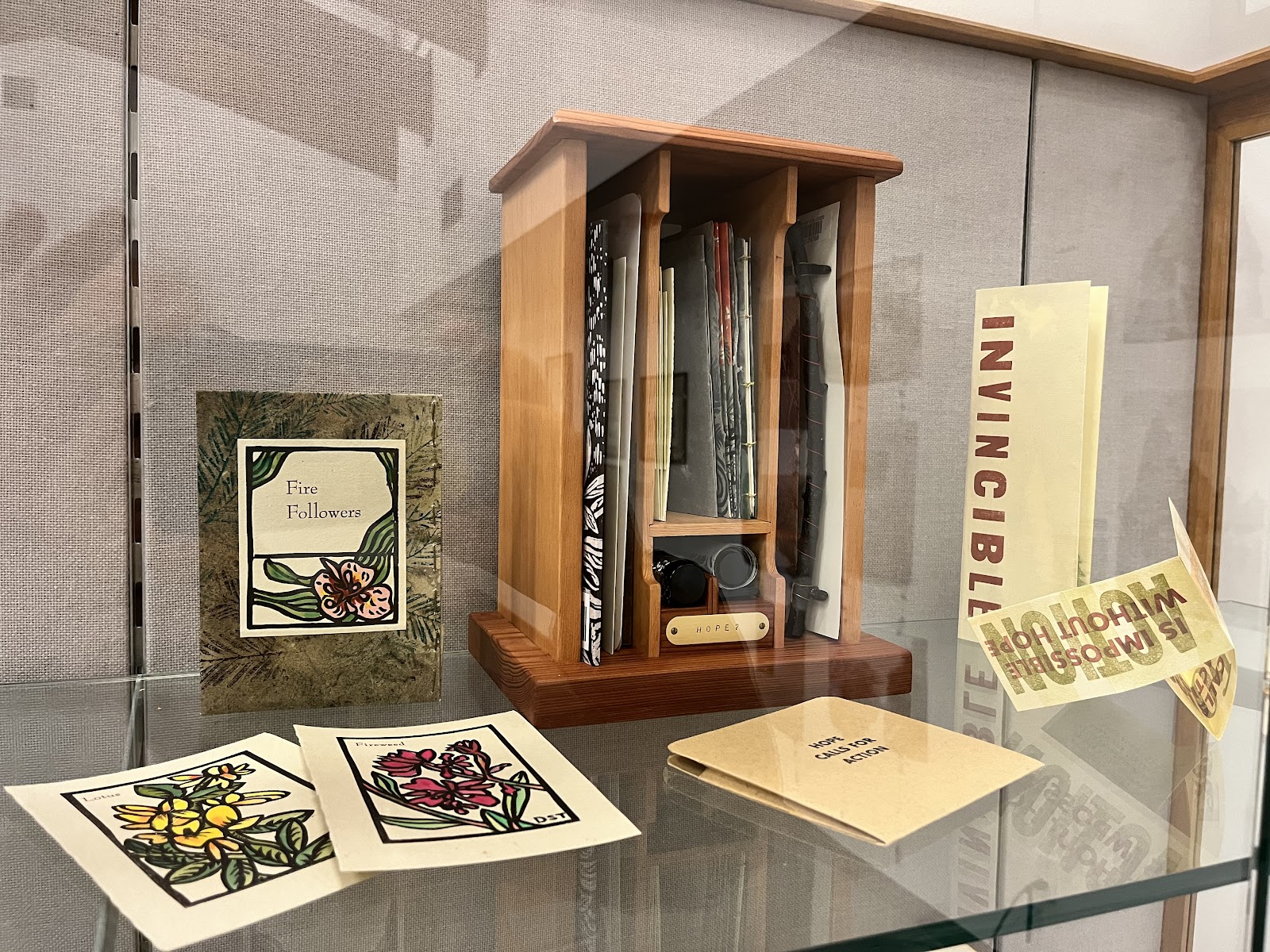Friday, November 22, 2024
Vintage papermaking moulds and deckles for sale
Saturday, November 2, 2024
Colorado in the Sea of Time - a collaborative bookmaking project October 2024
In October 2024 the National Association of Hand Papermakers (NAHP) held their annual meeting in Denver. Over the past 20 years I have organized several post conference collaborative bookmaking sessions after a conference. Denver was the home of my good friend and papermaking colleague, Ray Tomasso, and his InterOcean Studio. Ray’s wife, Diane Tomasso, has converted his studio to a community working space, and she offered Susan Mackin Dolan and I the opportunity to hold a post-conference collaborative bookmaking event to remember and honor our friendships with Ray.
After much back-and-forth between Susan and I, we came up with a theme for the project based on the title of one of Rays artworks: Colorado in the Sea of Time. We saw potential for a timeline sequenced book with images that would both reflect the seemingly endless geologic timeline and our own timelines which often end much too soon.
We gathered seven other artists who knew Ray: John Cunningham, Joyce Gold, MaryEllen Matthews, Jill Powers, Brian Queen and Naomi Saltzman. Some were Colorado locals who knew or had worked with him, and some were Ray’s papermaking collogues from distant places. We set aside three days to develop the concept, make paper, carve and print images and text and fold a binding. Ray’s studio has papermaking, letterpress, and art making spaces and supplies, which made it possible for us to create this book in the very short time allocated
Before the event, Susan and I had decided we would make a landscape format book measuring about 3.5 x 8.5 inches, with an accordion spine. Before leaving on the trip I made paper for the accordion folded spine. Diane offered some of Ray’s unfinished cast paper artwork to use for the covers of the book and sheets of Ray’s green paper for a page with a quote about Yucca. Each participant brought 20 sheets of handmade paper to work on, and contribute as pages to the book. Susan directed the printmaking, bringing wood, linoleum, ink and tools for the participants to use. Brian Queen led the papermaking. I directed work in the letterpress shop, printing the title page and three pages of text, using fonts of Rays wooden type I had always lusted to use….
At the start of the workshop, after a short discussion, we decided to work with the idea of a timeline from prehistoric to now, using quotes from Willa Cather’s Song of the Lark, (as much of the story takes place just outside of Denver) to provide some quick visual inspiration and help tie the imagery together aesthetically. Then we went to work.
Some of the group made paper, pigmenting the pulp with finely sieved red soil from Susan’s backyard in the mountains near Vail, and yellow ochres that Ray had collected earlier in his career. This paper was used for the colophon page which was printed using a laser printer. At the same time others started designing their illustrations and carving their blocks. I pulled proofs of the title page and the pages of text. Joyce’s husband, Richard had a wood shop and assisted in cutting down Ray’s unfinished artworks to cover size, which some then painted in reds and browns using a color palette of we had seen in Ray’s work currently on display in the Englewood City Hall. On day three we lined up all of the finished work on a table, determined the page order, based on both chronology and aesthetics, then assembled the books. It was tight quarters, and a lot of work, but in the end we produced some wonderful work, which we were proud to dedicate to the memory of Ray Tomasso.
Wednesday, July 24, 2024
Yale University showing our Accordion Book!
The Beineke Library at Yale University has acquired one of our "History of the Accordion" books. Here is a nice video they shared with us:
Beineke Library video of the "History of the Accordion" Book.
Sunday, July 7, 2024
The Eclipse
This is our first road trip since the pandemic. When we found the full eclipse of the sun would be seen from Texas in the first part of April 2024, we planned things to be there for the celestial event. When setting up the workshop at the Austin Center for the book, our host suggested we might enjoy seeing it while attending the Kerrville Folk Festival's "Kerrclipse" event.
The Kerrville Folk festival has been putting on multi-week folk music festivals for over 50 years, and all the info you want to know about it can be found on the internet, but this was their first eclipse festival and a great adventure for all involved. Yes we got a bit skunked, as the weather was cloudy, but the clouds parted just enough at totality that we could see the corona and the solar flares.
Tuesday, April 16, 2024
Wandering in the spring of 2024 - California to Texas
On March 23, 2024 we left home, on our first trip as Wandering Book Artists since the pandemic stopped everything. The first thing we did was stop for gas, and the first thing that happened was a crowd of gas pumping patrons crowded around the wagon to get a closer look. It seems to have a magic that bridges over differences of age, ethnicity, regional differences and politics and creates a space where we get to share beauty and conversation with everyone.
As Wandering Book Artists we also have the good fortune to visit and share with librarians, art students and professors, and members of community-based book arts centers in person. We get to talk about the future of the book as art, the skills involved in making books, and show them our artists' books. Everyone learns so much as we talk about each book while they look through them, turning pages or unrolling a scroll. We can share the inspirations that drove each decision in the making of the book. We talk about how the two of us work together, how we divide tasks, and give feedback to each other's ideas. And we also get the opportunity to learn from them through the questions, statement, thoughts, and the books they show us.
Our first library visit was to Scripps College in Claremont, California. We talked to a book arts class where they were getting ready to make their final book project of the semester. They analyzed book structures and printing techniques in our books. They asked good questions about the viability of making a living as a book artist.
Our next stop was Occidental College. We parked the caravan on campus right in front of the library. What a funny scene it was driving along sidewalks that were reserved (and filled with) pedestrians. While Peter talked to Jocelyn Pederson's letterpress printing class Donna stayed in the wagon watching over 75 people enter and marvel at its uniqueness and imagine the dreaminess of traveling around the country for a bit of one's life.
The Lowercase: Occidental College's letterpress shop
The Phoenix Public Library is a real showcase for a modern, beautiful, comfortable, sustainably-built library. If you get a chance, stop in for a visit. They also have a great archive of rare books which they regularly display from. Look for our Koch Real Accordion Book there!
Texas sunset


At the University of Texas in Austin's Special Collections in the Fine Arts Library, as Peter talked about each book, the librarian, Tina Tran, told him she was impressed by his professionalism. I guess experience pays off: we've visited lots of libraries over the last 15 years as the Wandering Book Artists!
Peter taught a 2-day workshop at the Austin Book Arts Center. They explored letterpress printing techniques and simple folded paper pamphlets while jointly creating a finished book project.
And now we begin our trip back west - to California, via Santa Fe, the Grand Canyon, and Mt Carmel with Maynard Dixon's home. That story will be told in a blog post after we are home!














































